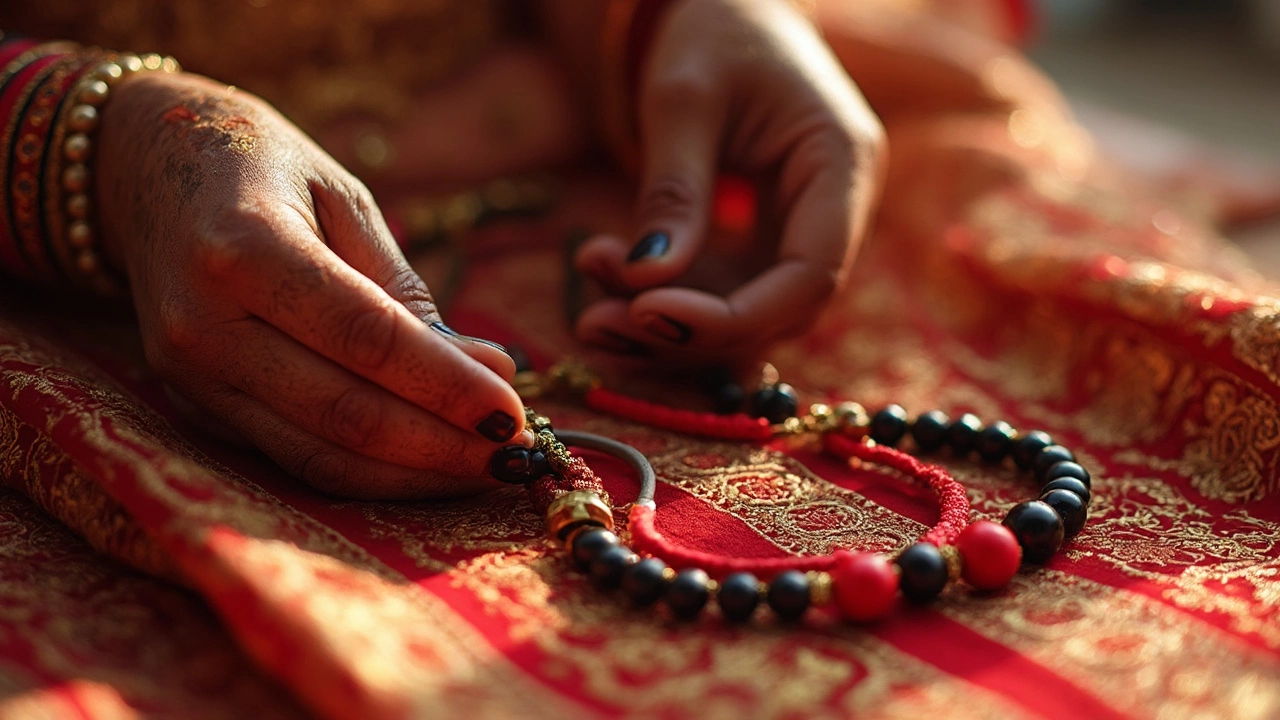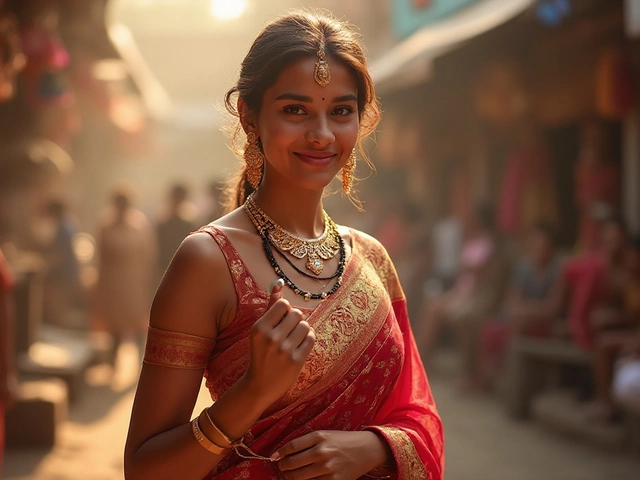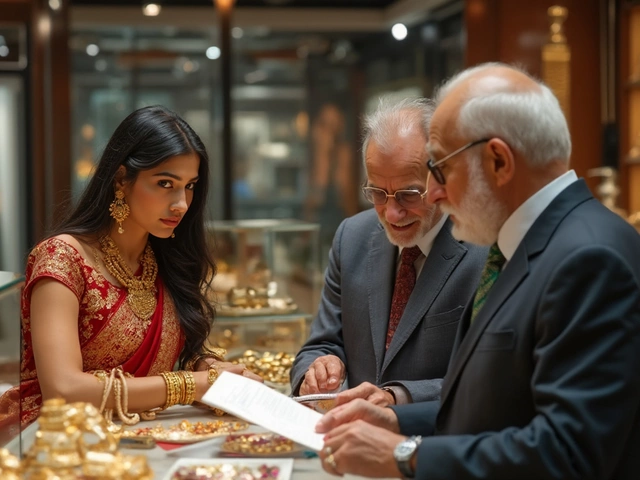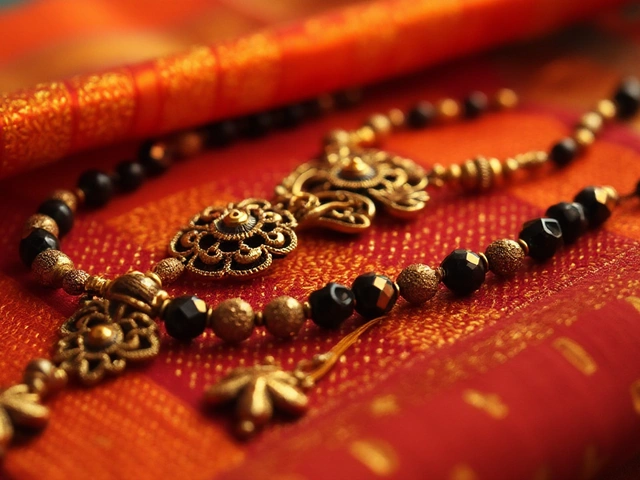Ever wondered why almost every mangalsutra you see has those tiny red beads mixed in? They're not just there for decoration. The red beads actually have a story, and it goes much deeper than just matching your saree or lengha. If you’ve been shopping for a new mangalsutra or even just admiring your mom’s old one, you’ve probably noticed these beads stand out, breaking up the black and gold.
The truth is, those red beads serve a purpose in both style and tradition. When jewelers string them in, it’s not random—it’s rooted in years of meaning, family beliefs, and good old practical thinking. If you’re looking to buy a mangalsutra or thinking to gift one, knowing this could help you pick the perfect design. Stick around and you’ll get why skipping the red beads just feels, well, incomplete.
- Why Red Beads Are Used
- Symbolism Hidden in the Beads
- How Red Beads Affect Modern Designs
- Tips for Choosing the Right Mangalsutra
Why Red Beads Are Used
When you look at a mangalsutra, the red beads seem like such a small detail, but they carry a lot of meaning. Historically, these beads have symbolized more than just style. In Hindu culture, red stands for power, purity, and new beginnings—basically, everything you want in a marriage. So, adding red beads to a mangalsutra design isn’t about randomly picking a color to jazz things up.
Across different states—think Maharashtra, Tamil Nadu, Andhra Pradesh—you’ll spot red beads in most traditional designs. There’s a practical angle too. Just like black beads are meant to ward off bad vibes, the red beads work as a kind of ‘protective booster.’ They balance out the black beads, sending a message that the wearer is protected and blessed from all sides. This combo is so well-accepted that skipping red beads often raises eyebrows among those in the know.
“Red beads in the mangalsutra have been linked to energy and fertility for centuries. Their place in the design is intentional and respected,” — Dr. Purnima Rao, Cultural Anthropologist.
There’s also a health angle that gets mentioned in old-school families. Some believe the red beads keep your blood circulation in check, especially since the mangalsutra sits close to your skin on your neck or chest through the day. No one says it’s a medical fact, but it’s a belief that’s been passed along with every generation.
Let’s break it down for clarity. Here are the main reasons why jewelers and families insist on those red beads:
- Symbolic link to marriage, power, and protection
- Traditional requirement in most regional mangalsutra designs
- Family beliefs about bringing positivity and good health
- All-rounder style: red beads help the black and gold pop, making the design sharp and recognizable
Statistics gathered by the Indian Jewellery Association in 2023 show that about 75% of modern mangalsutras sold still include at least a couple of red beads. This just proves the point—even new-age couples won’t skip this detail.
Symbolism Hidden in the Beads
The red beads in a mangalsutra aren’t just an accessory add-on. They pack in a lot of tradition and meaning, and in some families, skipping them is just not an option. So, what do these red beads actually stand for?
First off, the red color isn’t random. In Hindu culture, red is a high-energy color that shows up everywhere from wedding sarees to bangles and sindoor. It’s all about power, love, strength, and keeping away negativity. People believe slipping these red beads into the mangalsutra design protects the marriage and adds positivity to a couple’s life. It’s not just about luck—red is seen as a symbol of married life, fertility, and good health for the husband and wife.
Here’s something extra interesting—if you look at mangalsutras from different regions in India, you might notice a variety in the number and placement of these red beads. For many Maharashtrian, Tamil, and Telugu designs, the red beads are paired alongside the classic black ones. The black is for warding off evil; the red keeps the bond strong and full of life.
Quick breakdown of what the red beads may represent:
- Love and passion: The universal vibe of red.
- Fertility and health: Seen as blessings for a long, happy marriage.
- Tradition and commitment: It marks the marital status, just like a wedding ring in the West.
Here’s a look at the usual approaches to red beads in mangalsutra styles across three states:
| State | Red Bead Placement | Common Meaning |
|---|---|---|
| Maharashtra | Between black beads, close to pendant | Prosperity and strength |
| Tamil Nadu | Alternating red and black beads | Protection and energy |
| Gujarat | Mostly near clasps or ends | Traditional identity |
If you spot someone wearing a mangalsutra with red beads, you know there’s a lot more to it than style. They’re carrying bits of family belief, local culture, and centuries-old symbolism right there on a chain. That’s why skipping the red beads feels like skipping a pretty big piece of the story.
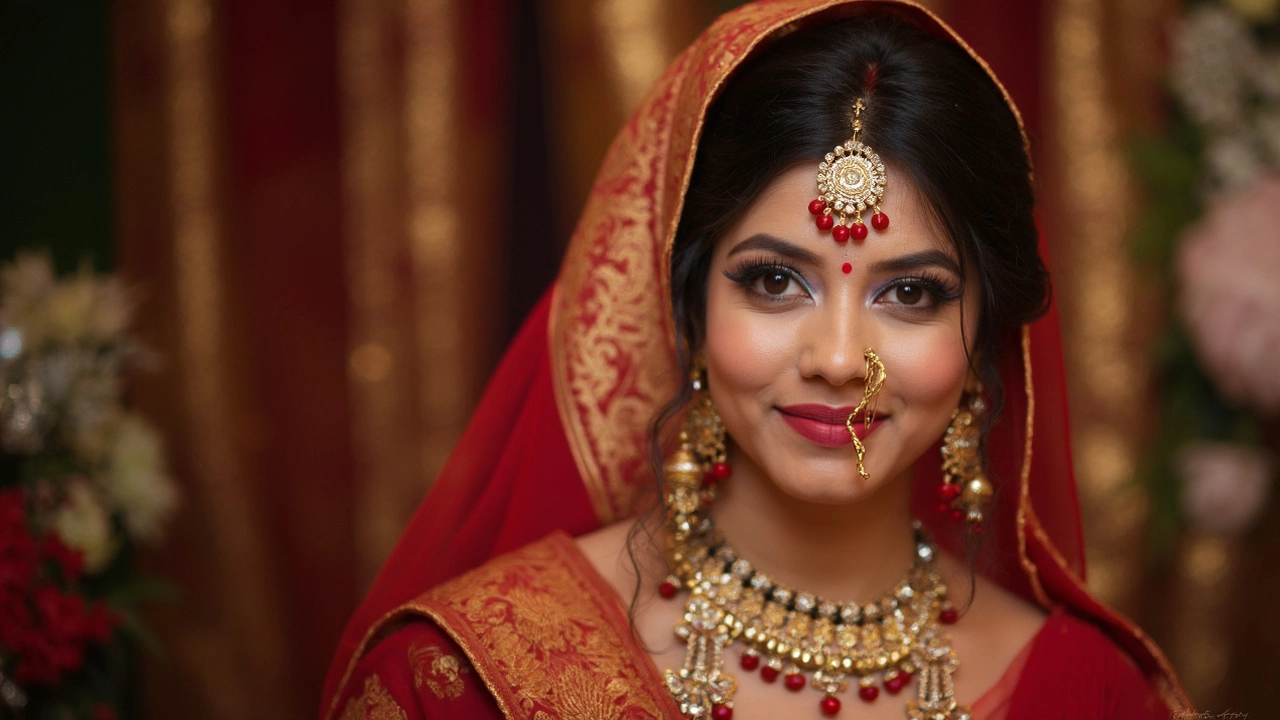
How Red Beads Affect Modern Designs
It’s wild how the humble red bead can change the whole vibe of a mangalsutra. In today’s world, designers are always experimenting, but you’ll notice red beads still show up in almost every modern piece. They aren’t just thrown in to copy old styles; they actually make the design pop in a simple, classic way. Even major jewelers admit that whenever they try to drop the red beads, brides ask for them back. The beads break up the black and gold and add a dash of color you don’t get from just metal or onyx.
These days, mangalsutra designs range from super traditional to sleek and minimal. But the red beads keep hanging on. Minimalist styles, for instance, might use smaller beads or space them farther apart, but they’re still there. Some brands like CaratLane and Tanishq even offer customize-your-own options—most customers still pick at least a couple red beads, proving they’re not ready to let go of that bit of cultural identity. Plus, the beads are functional: they’re believed to bring good luck and protect against bad energy, a belief that spans from grandmothers in rural Maharashtra to urban working brides in Mumbai.
If you’re thinking about picking out a mangalsutra for yourself or as a gift, check out how designers are playing with red beads:
- Sleek gold chains with tiny red beads and diamond pendants
- Layered mangalsutras mixing black, red, and gold beads in unique patterns
- Chunkier bead arrangements in regional styles, topped off with the classic red for luck
- Convertible mangalsutra bracelets (yes, that’s a thing!), always sneaking in a red bead or two
One recent survey by a Mumbai-based retailer found that about 80% of brides in their 20s still chose mangalsutra designs with at least four red beads, even if the rest of the design was very modern. Here’s a quick look:
| Design Style | Red Beads Included (%) |
|---|---|
| Classic | 98 |
| Minimal | 82 |
| Fusion | 88 |
The truth is, those little red beads tie together old and new, letting you carry a piece of tradition no matter how modern your style gets. So if you see a sleek mangalsutra that includes at least a hint of red, know that’s no accident. It's a smart mix of design and meaning that still hits home for most brides.
Tips for Choosing the Right Mangalsutra
Picking the perfect mangalsutra is a big deal. Not only does it carry traditional meaning, but it’s also something most people wear every day. So, getting it right matters—from comfort to style to the right balance of those red beads. Let’s zoom in on some key things to look for when buying one.
- Red Beads in Mangalsutra Designs: Always check how the red beads are incorporated. Some older designs mix in a few, while modern ones might use them more for a pop of color. Either way, ask the jeweler about the meaning and placement—they usually have a reason rooted in tradition.
- Length and Comfort: There’s no one-size-fits-all. Some like a short chain that sits on the collarbone, while others prefer a longer one. Consider what fits your lifestyle; if you’re super active, lightweight and less chunky is usually better.
- Material Check: Gold is classic (usually 22-karat), but you’ll also find mangalsutra designs in rose gold and even platinum. Always check if the red beads are glass, coral, or synthetic. Real coral beads cost more and aren’t as widely used today.
- Clasp and Durability: A solid clasp makes daily use worry-free. Magnetic clasps are handy, but traditional hooks are usually more long-lasting. Give the beads and chain a gentle tug in the store to see how sturdy everything feels.
- Symbolism and Personal Style: While the red beads are loaded with symbolism—standing for energy, fertility, and strength—don’t ignore your personal style. You can go minimal or ornate, as long as it makes you happy and feels genuine.
Still undecided? Here’s a quick look at how common mangalsutra materials and bead types line up:
| Material | Typical Use | Durability | Cost Factor |
|---|---|---|---|
| Gold (22K) | Traditional, daily wear | High | More expensive |
| Rose Gold | Modern, stylish | Moderate | Medium to high |
| Glass Red Beads | Classic, affordable | Medium | Budget-friendly |
| Coral Red Beads | Traditional, premium look | High | Costly |
When in doubt, always ask about how easily a design can be repaired or whether you can swap out red beads if they chip or break. And if you're picking one as a gift, double-check your loved one’s style preferences. That way, you buy something that’s meaningful and practical—not just another piece of jewelry.
